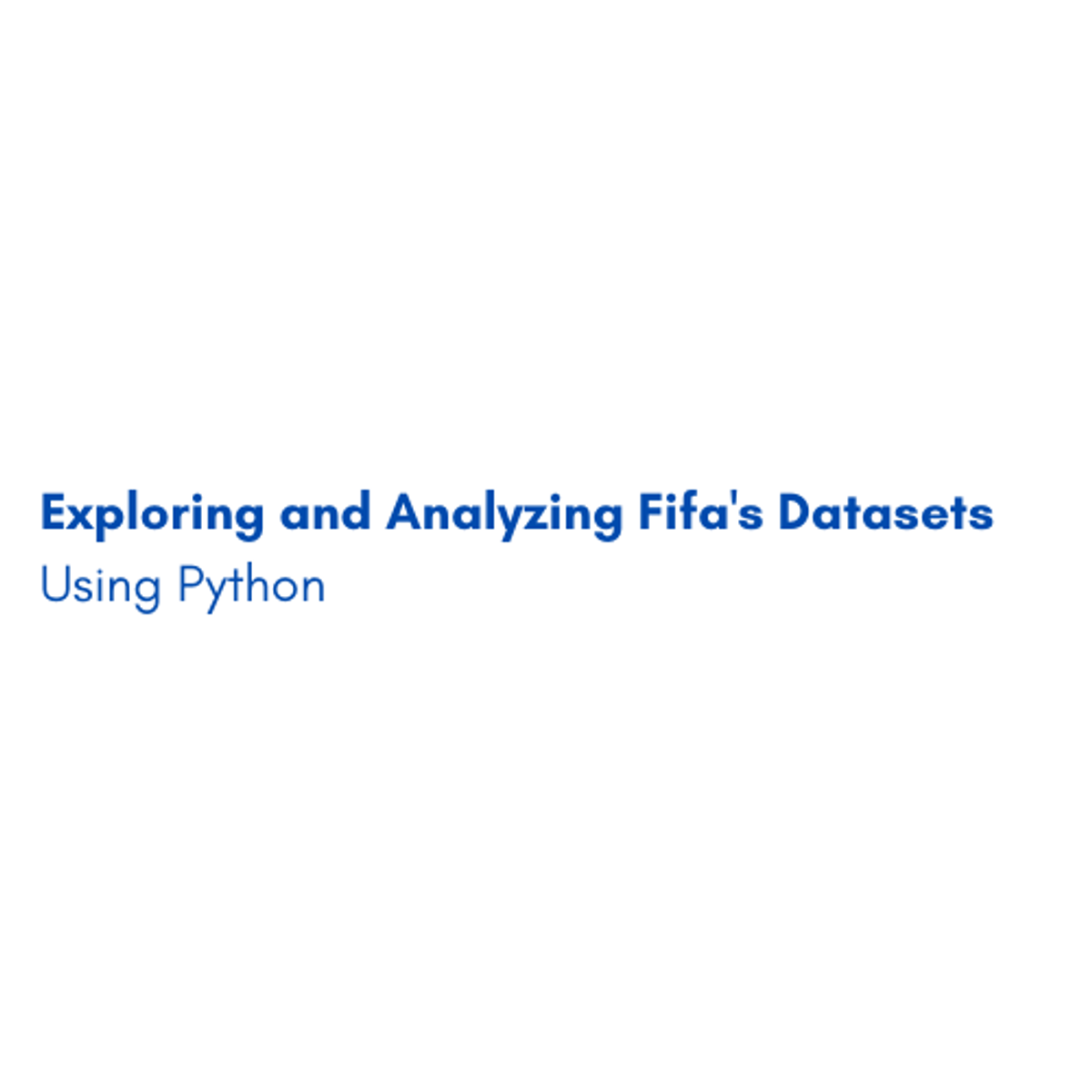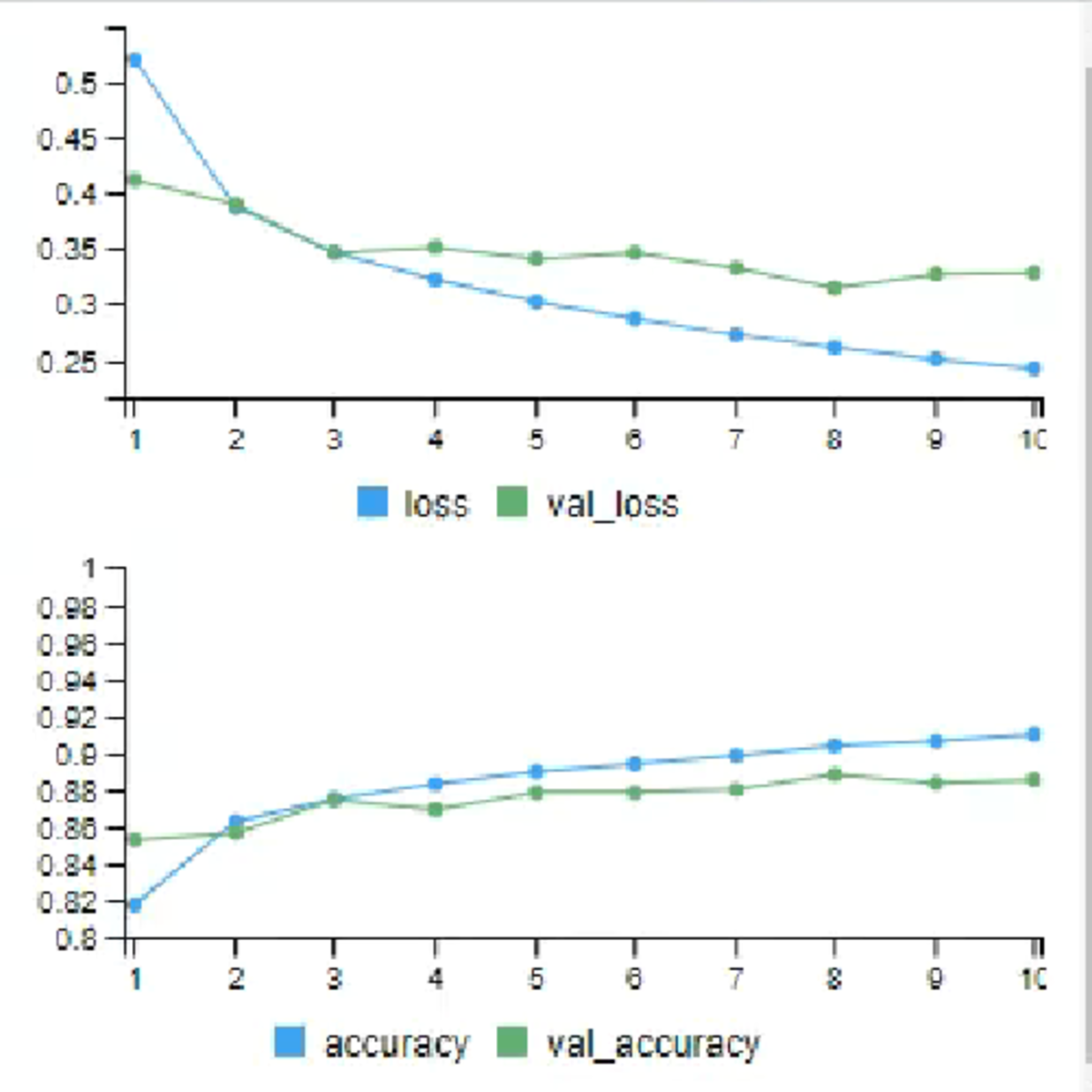Back to Courses









Computer Science Courses - Page 212
Showing results 2111-2120 of 2309

Exploring and Analyzing Fifa's Datasets Using Python
In this 1-hour long project-based course, you will learn how to load a dataset into a pandas dataframe, you will learn how to tidy a messy dataset (Data Tidying), you will get to also visualize the dataset using Matplotlib and seaborn, you will learn how to engineer new features, you will also get to learn how to merge datasets (Data Integration)
By the end of this project, you will be able to fully analyze a FIFA dataset using python’s Pandas library. Throughout the tasks you will be able to identify and apply the key aspects about data analysis such as Data Cleaning, Data transformation, Data Visualization , Data tidying and feature engineering.
All these skills are crucial to the world of data engineering and are very beneficial in today’s job market that is leaning more and more towards utilizing data in every way
Note: This course works best for learners who are based in the North America region. We’re currently working on providing the same experience in other regions.

Intro to Digital Manufacturing with Autodesk Fusion 360
The manufacturing industry is making a digital transformation, allowing companies to customize production through advances in machine learning, sustainable design, generative design, and collaboration, with integrated design and manufacturing processes. This course introduces innovations in CAD and digital manufacturing, speaking to the rapid changes taking place that are forever transforming the future of making.
This course will also explore foundational concepts behind Autodesk® Fusion 360™ CAD/CAM. Fusion 360 is a cloud-based CAD/CAM tool for collaborative product development that combines industrial design, mechanical engineering, and machine tool programming into one software solution. Through a series of lectures and hands-on exercises, this course provides the core philosophy behind the software. By understanding how designs are both made and assembled, you'll learn to create better designs from the start.
After completing this course, you will be able to:
• Summarize an understanding of digital manufacturing, principles of sustainable design, and manufacturing processes.
• Explain and discuss how trends such as generative design and machine learning are influencing innovation, and how things are made.
• Demonstrate knowledge and skills in foundational concepts of Fusion 360 CAD/CAM software.
• Practice design collaboration and file management best practices using Fusion 360 cloud-based features
Looking for Autodesk Fusion 360 certification prep courses? Check out additional learning resources to help you uplevel your skills: https://www.autodesk.com/learning

Build social awareness content for Instagram with Canva
At the end of this project, you will have all the basic skills to create Instagram content to educate and inform your audience using the Canva platform, an online tool for creating and editing Marketing visuals. You will be able to create customizable graphic content using the various design tools, colors and graphics offered by Canva. This project is for beginners, people who have no knowledge of graphic design and would like to contribute to a better world. It is ideal for creating professional graphic content for Instagram using different templates offered by Canva.

Build a Deep Learning Based Image Classifier with R
In this 45-min guided project, you will learn the basics of using the Keras interface to R with Tensorflow as its backend to solve an image classification problem. By the time you complete this project, you will have used the R programming language to build, train, and evaluate a neural network model to classify images of clothing items into categories such as t-shirts, trousers, and sneakers. We will be training the deep learning based image classification model on the Fashion MNIST dataset which contains 70000 grayscale images of clothes across 10 categories.
In order to be successful in this project, you should be familiar with R programming, and basics of neural networks.
Note: This course works best for learners who are based in the North America region. We’re currently working on providing the same experience in other regions.

English Communication for Tech Professionals
Improve your English, boost your tech career, and move toward a higher-paying job by leveling up your communication skills in English Communication for Tech Professionals brought to you by Arizona State University and English4IT.
This course is for all business roles, both technical and non-technical, from developers to CEOs.
The course targets 6 main skill areas:
- vocabulary
- grammar
- pronunciation
- soft skills
- speaking & writing
After completing this course, you will:
- improve your English for professional communication;
- build your vocabulary with at least 30 new useful words and phrases from each module;
- master key grammar topics;
- have templates for emails and meetings which you can start using in your work right away;
- create a professional and attention-grabbing resume (or CV) in English and upgrade your LinkedIn profile;
- prepare for a job interview by learning useful strategies and skills that will help you preform better in interviews.

Beginners Guide to YAML Syntax
By the end of this project, you will have an understanding of the basics of YAML syntax. This course is for absolute beginners who have no previous experience and want to gain an understanding of YAML syntax. This course will provide an overview of YAML data serialization language. YAML is a human-readable data serialization standard within the software industry and can be used in conjunction with all programming languages and is most commonly used to write configuration files. There are no prerequisites for completing the course, however, you should have a basic understanding of software engineering principles.
Note: This course works best for learners who are based in the North America region. We’re currently working on providing the same experience in other regions.

Create a Balanced Scorecard to Align Priorities in Miro
By the end of this project, you will be able to create a balanced scorecard to communicate team goals and measure the progress made toward those goals.
To do this, you will gain hands-on experience incorporating customer, financial, internal process, and employee perspectives within a balanced scorecard in the Miro online visual collaboration platform for teamwork.
Note: This course works best for learners who are based in the North America region. We’re currently working on providing the same experience in other regions.

JSON and Natural Language Processing in PostgreSQL
Within this course, you’ll learn about how PostgreSQL creates and uses inverted indexes for JSON and natural language content. We will use various sources of data for our databases, including access to an online API and spidering its data and storing the data in a JSON column in PostgreSQL. Students will explore how full-text inverted indexes are structured. Students will build their own inverted indexes and then make use of PostgreSQL built-in capabilities to support full-text indexes.

Check Point Jump Start: Network Security
In this course brought to you by industry leader Check Point, they will cover cybersecurity threats and elements of Check Point's Security Management architecture. This course will prepare you for the exam, #156-412, at PearsonVUE.(https://home.pearsonvue.com/checkpoint)

GUI Programming: Create a Login System in Python
By the end of this guided project, you’ll be able to create a login system using python’s popular library Tkinter. You’ll learn how to create a Graphical User Interface (GUI) in Python from the scratch. You’ll learn how to create windows, labels, entry boxes and buttons. You’ll learn how to extract data from the entry boxes. You’ll learn how to change color, size orientation of most of Tkinter’s widgets. You’ll learn how to add functionality to the buttons. You’ll be capable of manipulating text files by writing, reading, appending and creating them.
Out of all the GUI methods in Python, Tkinter is the most commonly used method. Python with Tkinter is the fastest and easiest way to create GUI applications. Tkinter widgets can be used to construct buttons, menus, data fields, etc. in a Python application. Once created, these graphical elements can be associated with or interact with features, functionality, methods, data or even other widgets.
Note: This course works best for learners who are based in the North America region. We’re currently working on providing the same experience in other regions.
